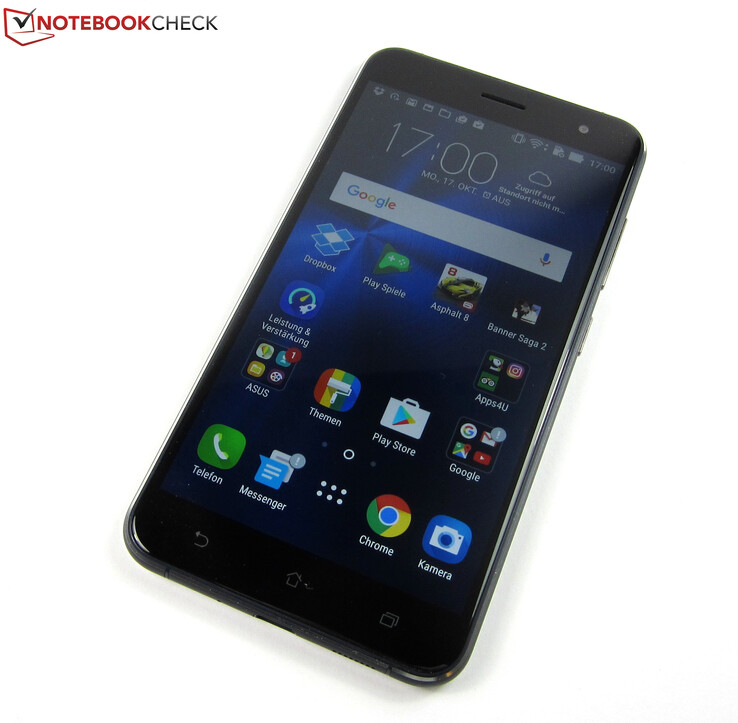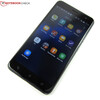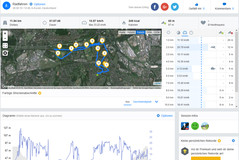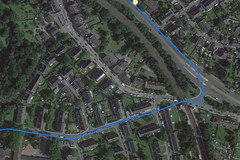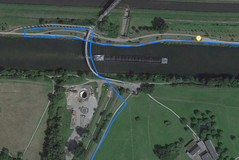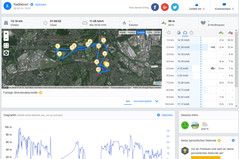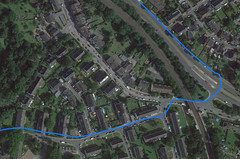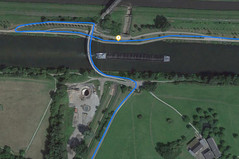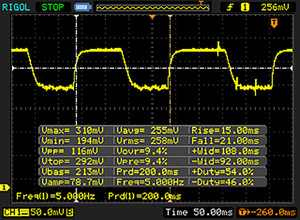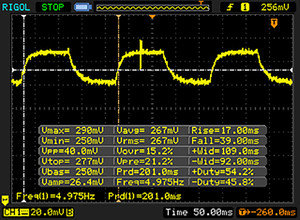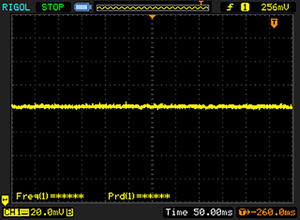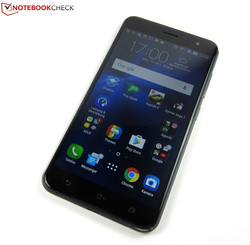Breve Análise do Smartphone Asus ZenFone 3
Os Top 10
» Os Top 10 Portáteis Multimídia
» Os Top 10 Portáteis de Jogos
» Os Top 10 Portáteis Leves para Jogos
» Os Top 10 Portáteis Acessíveis de Escritório/Empresariais
» Os Top 10 Portáteis Premium de Escritório/Empresariais
» Os Top 10 dos Portáteis Workstation
» Os Top 10 Subportáteis
» Os Top 10 Ultrabooks
» Os Top 10 Conversíveis
» Os Top 10 Tablets
» Os Top 10 Smartphones
» A melhores Telas de Portáteis Analisadas Pela Notebookcheck
» Top 10 dos portáteis abaixo dos 500 Euros da Notebookcheck
» Top 10 dos Portáteis abaixo dos 300 Euros
Size Comparison
| Networking | |
| iperf3 transmit AX12 | |
| OnePlus 3 | |
| ZTE Axon 7 | |
| Asus Zenfone 3 ZE552KL | |
| iperf3 receive AX12 | |
| ZTE Axon 7 | |
| OnePlus 3 | |
| Asus Zenfone 3 ZE552KL | |
| |||||||||||||||||||||||||
iluminação: 93 %
iluminação com acumulador: 658 cd/m²
Contraste: 997:1 (Preto: 0.66 cd/m²)
ΔE Color 4.9 | 0.5-29.43 Ø5
ΔE Greyscale 5.8 | 0.57-98 Ø5.3
Gamma: 2.26
| Asus Zenfone 3 ZE552KL IPS, 1920x1080, 5.50 | OnePlus 3 Optic-AMOLED, 1920x1080, 5.50 | Samsung Galaxy A5 2016 Super AMOLED, 1920x1080, 5.20 | Honor 8 IPS, 1920x1080, 5.20 | ZTE Axon 7 AMOLED, 2560x1440, 5.50 | |
|---|---|---|---|---|---|
| Screen | -9% | 18% | -6% | -18% | |
| Brightness middle | 658 | 419 -36% | 378 -43% | 451 -31% | 328 -50% |
| Brightness | 633 | 431 -32% | 380 -40% | 443 -30% | 334 -47% |
| Brightness Distribution | 93 | 84 -10% | 91 -2% | 93 0% | 88 -5% |
| Black Level * | 0.66 | 0.4 39% | |||
| Contrast | 997 | 1128 13% | |||
| Colorchecker dE 2000 * | 4.9 | 4.1 16% | 1.95 60% | 5.4 -10% | 4.6 6% |
| Colorchecker dE 2000 max. * | 9.1 | 12 -32% | 3.09 66% | 9.9 -9% | 14.7 -62% |
| Greyscale dE 2000 * | 5.8 | 3.3 43% | 1.86 68% | 6.7 -16% | 2.8 52% |
| Gamma | 2.26 97% | 2.1 105% | 2.13 103% | 2.33 94% | 2.29 96% |
| CCT | 7840 83% | 6550 99% | 6376 102% | 8262 79% | 6612 98% |
| Color Space (Percent of AdobeRGB 1998) | 89.38 | ||||
| Color Space (Percent of sRGB) | 100 |
* ... smaller is better
Display Response Times
| ↔ Response Time Black to White | ||
|---|---|---|
| 36 ms ... rise ↗ and fall ↘ combined | ↗ 15 ms rise | |
| ↘ 21 ms fall | ||
| The screen shows slow response rates in our tests and will be unsatisfactory for gamers. In comparison, all tested devices range from 0.1 (minimum) to 240 (maximum) ms. » 93 % of all devices are better. This means that the measured response time is worse than the average of all tested devices (21.5 ms). | ||
| ↔ Response Time 50% Grey to 80% Grey | ||
| 56 ms ... rise ↗ and fall ↘ combined | ↗ 17 ms rise | |
| ↘ 39 ms fall | ||
| The screen shows slow response rates in our tests and will be unsatisfactory for gamers. In comparison, all tested devices range from 0.2 (minimum) to 636 (maximum) ms. » 91 % of all devices are better. This means that the measured response time is worse than the average of all tested devices (33.7 ms). | ||
Screen Flickering / PWM (Pulse-Width Modulation)
| Screen flickering / PWM not detected | |||
In comparison: 53 % of all tested devices do not use PWM to dim the display. If PWM was detected, an average of 17915 (minimum: 5 - maximum: 3846000) Hz was measured. | |||
| AnTuTu v6 - Total Score (sort by value) | |
| Asus Zenfone 3 ZE552KL | |
| ZTE Axon 7 | |
| Honor 8 | |
| Samsung Galaxy A5 2016 | |
| OnePlus 3 | |
| Geekbench 4.0 | |
| 64 Bit Multi-Core Score (sort by value) | |
| Asus Zenfone 3 ZE552KL | |
| ZTE Axon 7 | |
| Honor 8 | |
| OnePlus 3 | |
| 64 Bit Single-Core Score (sort by value) | |
| Asus Zenfone 3 ZE552KL | |
| ZTE Axon 7 | |
| Honor 8 | |
| OnePlus 3 | |
| 3DMark | |
| 1280x720 offscreen Ice Storm Unlimited Score (sort by value) | |
| Asus Zenfone 3 ZE552KL | |
| ZTE Axon 7 | |
| Honor 8 | |
| Samsung Galaxy A5 2016 | |
| OnePlus 3 | |
| 1280x720 offscreen Ice Storm Unlimited Graphics Score (sort by value) | |
| Asus Zenfone 3 ZE552KL | |
| ZTE Axon 7 | |
| Honor 8 | |
| Samsung Galaxy A5 2016 | |
| OnePlus 3 | |
| 1280x720 offscreen Ice Storm Unlimited Physics (sort by value) | |
| Asus Zenfone 3 ZE552KL | |
| ZTE Axon 7 | |
| Honor 8 | |
| Samsung Galaxy A5 2016 | |
| OnePlus 3 | |
| 2560x1440 Sling Shot OpenGL ES 3.0 (sort by value) | |
| Asus Zenfone 3 ZE552KL | |
| ZTE Axon 7 | |
| Honor 8 | |
| Samsung Galaxy A5 2016 | |
| OnePlus 3 | |
| 2560x1440 Sling Shot OpenGL ES 3.0 Graphics (sort by value) | |
| Asus Zenfone 3 ZE552KL | |
| ZTE Axon 7 | |
| Honor 8 | |
| Samsung Galaxy A5 2016 | |
| OnePlus 3 | |
| 2560x1440 Sling Shot OpenGL ES 3.0 Physics (sort by value) | |
| Asus Zenfone 3 ZE552KL | |
| ZTE Axon 7 | |
| Honor 8 | |
| Samsung Galaxy A5 2016 | |
| OnePlus 3 | |
| GFXBench (DX / GLBenchmark) 2.7 | |
| T-Rex Onscreen (sort by value) | |
| Asus Zenfone 3 ZE552KL | |
| ZTE Axon 7 | |
| Honor 8 | |
| Samsung Galaxy A5 2016 | |
| OnePlus 3 | |
| 1920x1080 T-Rex Offscreen (sort by value) | |
| Asus Zenfone 3 ZE552KL | |
| ZTE Axon 7 | |
| Honor 8 | |
| Samsung Galaxy A5 2016 | |
| OnePlus 3 | |
| GFXBench 3.0 | |
| on screen Manhattan Onscreen OGL (sort by value) | |
| Asus Zenfone 3 ZE552KL | |
| ZTE Axon 7 | |
| Honor 8 | |
| Samsung Galaxy A5 2016 | |
| OnePlus 3 | |
| 1920x1080 1080p Manhattan Offscreen (sort by value) | |
| Asus Zenfone 3 ZE552KL | |
| ZTE Axon 7 | |
| Honor 8 | |
| Samsung Galaxy A5 2016 | |
| OnePlus 3 | |
| GFXBench 3.1 | |
| on screen Manhattan ES 3.1 Onscreen (sort by value) | |
| Asus Zenfone 3 ZE552KL | |
| ZTE Axon 7 | |
| Honor 8 | |
| OnePlus 3 | |
| 1920x1080 Manhattan ES 3.1 Offscreen (sort by value) | |
| Asus Zenfone 3 ZE552KL | |
| ZTE Axon 7 | |
| Honor 8 | |
| OnePlus 3 | |
| PCMark for Android - Work performance score (sort by value) | |
| Asus Zenfone 3 ZE552KL | |
| ZTE Axon 7 | |
| Honor 8 | |
| Samsung Galaxy A5 2016 | |
| OnePlus 3 | |
| Octane V2 - Total Score (sort by value) | |
| Asus Zenfone 3 ZE552KL | |
| OnePlus 3 | |
| Samsung Galaxy A5 2016 | |
| Honor 8 | |
| ZTE Axon 7 | |
| Mozilla Kraken 1.1 - Total (sort by value) | |
| Asus Zenfone 3 ZE552KL | |
| OnePlus 3 | |
| Samsung Galaxy A5 2016 | |
| Honor 8 | |
| ZTE Axon 7 | |
| WebXPRT 2015 - Overall (sort by value) | |
| Asus Zenfone 3 ZE552KL | |
| OnePlus 3 | |
| Samsung Galaxy A5 2016 | |
| Honor 8 | |
| ZTE Axon 7 | |
| JetStream 1.1 - Total Score (sort by value) | |
| Asus Zenfone 3 ZE552KL | |
| OnePlus 3 | |
| Samsung Galaxy A5 2016 | |
| Honor 8 | |
| ZTE Axon 7 | |
* ... smaller is better
| AndroBench 3-5 | |
| Sequential Read 256KB (sort by value) | |
| Asus Zenfone 3 ZE552KL | |
| OnePlus 3 | |
| Samsung Galaxy A5 2016 | |
| Honor 8 | |
| ZTE Axon 7 | |
| Sequential Write 256KB (sort by value) | |
| Asus Zenfone 3 ZE552KL | |
| OnePlus 3 | |
| Samsung Galaxy A5 2016 | |
| Honor 8 | |
| ZTE Axon 7 | |
| Random Read 4KB (sort by value) | |
| Asus Zenfone 3 ZE552KL | |
| OnePlus 3 | |
| Samsung Galaxy A5 2016 | |
| Honor 8 | |
| ZTE Axon 7 | |
| Random Write 4KB (sort by value) | |
| Asus Zenfone 3 ZE552KL | |
| OnePlus 3 | |
| Samsung Galaxy A5 2016 | |
| Honor 8 | |
| ZTE Axon 7 | |
| Sequential Read 256KB SDCard (sort by value) | |
| Asus Zenfone 3 ZE552KL | |
| Honor 8 | |
| ZTE Axon 7 | |
| Sequential Write 256KB SDCard (sort by value) | |
| Asus Zenfone 3 ZE552KL | |
| Honor 8 | |
| ZTE Axon 7 | |
| Asphalt 8: Airborne | |||
| Configurações | Valor | ||
| high | 29 fps | ||
| very low | 29 fps | ||
(+) The maximum temperature on the upper side is 38.6 °C / 101 F, compared to the average of 35 °C / 95 F, ranging from 21.9 to 56 °C for the class Smartphone.
(+) The bottom heats up to a maximum of 39.1 °C / 102 F, compared to the average of 33.8 °C / 93 F
(±) In idle usage, the average temperature for the upper side is 33 °C / 91 F, compared to the device average of 32.7 °C / 91 F.
Asus Zenfone 3 ZE552KL audio analysis
(+) | speakers can play relatively loud (83.7 dB)
Bass 100 - 315 Hz
(-) | nearly no bass - on average 33% lower than median
(±) | linearity of bass is average (9.9% delta to prev. frequency)
Mids 400 - 2000 Hz
(+) | balanced mids - only 4% away from median
(+) | mids are linear (5.7% delta to prev. frequency)
Highs 2 - 16 kHz
(+) | balanced highs - only 2.8% away from median
(+) | highs are linear (6.1% delta to prev. frequency)
Overall 100 - 16.000 Hz
(±) | linearity of overall sound is average (21.7% difference to median)
Compared to same class
» 37% of all tested devices in this class were better, 8% similar, 55% worse
» The best had a delta of 12%, average was 38%, worst was 134%
Compared to all devices tested
» 56% of all tested devices were better, 7% similar, 36% worse
» The best had a delta of 4%, average was 25%, worst was 134%
ZTE Axon 7 audio analysis
(+) | speakers can play relatively loud (87.1 dB)
Bass 100 - 315 Hz
(-) | nearly no bass - on average 25.8% lower than median
(±) | linearity of bass is average (12.3% delta to prev. frequency)
Mids 400 - 2000 Hz
(±) | higher mids - on average 6% higher than median
(+) | mids are linear (4.6% delta to prev. frequency)
Highs 2 - 16 kHz
(±) | higher highs - on average 7.7% higher than median
(±) | linearity of highs is average (7% delta to prev. frequency)
Overall 100 - 16.000 Hz
(±) | linearity of overall sound is average (24.4% difference to median)
Compared to same class
» 52% of all tested devices in this class were better, 8% similar, 40% worse
» The best had a delta of 12%, average was 38%, worst was 134%
Compared to all devices tested
» 70% of all tested devices were better, 6% similar, 24% worse
» The best had a delta of 4%, average was 25%, worst was 134%
Honor 8 audio analysis
(+) | speakers can play relatively loud (84.7 dB)
Bass 100 - 315 Hz
(-) | nearly no bass - on average 24% lower than median
(±) | linearity of bass is average (12.1% delta to prev. frequency)
Mids 400 - 2000 Hz
(+) | balanced mids - only 4.1% away from median
(+) | mids are linear (5.3% delta to prev. frequency)
Highs 2 - 16 kHz
(±) | higher highs - on average 11.8% higher than median
(±) | linearity of highs is average (7.2% delta to prev. frequency)
Overall 100 - 16.000 Hz
(±) | linearity of overall sound is average (28% difference to median)
Compared to same class
» 68% of all tested devices in this class were better, 5% similar, 26% worse
» The best had a delta of 12%, average was 38%, worst was 134%
Compared to all devices tested
» 82% of all tested devices were better, 3% similar, 14% worse
» The best had a delta of 4%, average was 25%, worst was 134%
Samsung Galaxy A5 2016 audio analysis
(+) | speakers can play relatively loud (87.7 dB)
Bass 100 - 315 Hz
(-) | nearly no bass - on average 33.7% lower than median
(±) | linearity of bass is average (11.1% delta to prev. frequency)
Mids 400 - 2000 Hz
(+) | balanced mids - only 4.2% away from median
(+) | mids are linear (5.4% delta to prev. frequency)
Highs 2 - 16 kHz
(+) | balanced highs - only 4.7% away from median
(±) | linearity of highs is average (8.4% delta to prev. frequency)
Overall 100 - 16.000 Hz
(±) | linearity of overall sound is average (22.1% difference to median)
Compared to same class
» 40% of all tested devices in this class were better, 7% similar, 53% worse
» The best had a delta of 12%, average was 38%, worst was 134%
Compared to all devices tested
» 59% of all tested devices were better, 7% similar, 34% worse
» The best had a delta of 4%, average was 25%, worst was 134%
OnePlus 3 audio analysis
(+) | speakers can play relatively loud (88.6 dB)
Bass 100 - 315 Hz
(-) | nearly no bass - on average 30.9% lower than median
(±) | linearity of bass is average (11.3% delta to prev. frequency)
Mids 400 - 2000 Hz
(+) | balanced mids - only 4.2% away from median
(+) | mids are linear (4.9% delta to prev. frequency)
Highs 2 - 16 kHz
(±) | higher highs - on average 5.6% higher than median
(+) | highs are linear (3.2% delta to prev. frequency)
Overall 100 - 16.000 Hz
(±) | linearity of overall sound is average (21.8% difference to median)
Compared to same class
» 37% of all tested devices in this class were better, 8% similar, 55% worse
» The best had a delta of 12%, average was 38%, worst was 134%
Compared to all devices tested
» 57% of all tested devices were better, 7% similar, 36% worse
» The best had a delta of 4%, average was 25%, worst was 134%
| desligado | |
| Ocioso | |
| Carga |
|
| Asus Zenfone 3 ZE552KL 3000 mAh | OnePlus 3 3000 mAh | Samsung Galaxy A5 2016 2900 mAh | Honor 8 3000 mAh | ZTE Axon 7 3250 mAh | |
|---|---|---|---|---|---|
| Power Consumption | -12% | 9% | -7% | -5% | |
| Idle Minimum * | 0.83 | 0.57 31% | 0.96 -16% | 0.78 6% | 0.64 23% |
| Idle Average * | 2.11 | 1.24 41% | 1.64 22% | 1.89 10% | 0.84 60% |
| Idle Maximum * | 2.12 | 1.36 36% | 1.71 19% | 2.02 5% | 0.87 59% |
| Load Average * | 3.41 | 5.92 -74% | 2.98 13% | 5.28 -55% | 6.02 -77% |
| Load Maximum * | 5.46 | 10.53 -93% | 5.08 7% | 5.44 -0% | 10.45 -91% |
* ... smaller is better
| Asus Zenfone 3 ZE552KL 3000 mAh | OnePlus 3 3000 mAh | Samsung Galaxy A5 2016 2900 mAh | Honor 8 3000 mAh | ZTE Axon 7 3250 mAh | |
|---|---|---|---|---|---|
| Battery Runtime | -9% | 11% | -27% | -21% | |
| Reader / Idle | 1502 | 1338 -11% | 2323 55% | 1487 -1% | 1735 16% |
| H.264 | 905 | 847 -6% | 672 -26% | 526 -42% | 704 -22% |
| WiFi v1.3 | 797 | 840 5% | 626 -21% | 499 -37% | 411 -48% |
| Load | 352 | 268 -24% | 483 37% | 255 -28% | 245 -30% |
Pro
Contra
A Asus coloca um smartphone de 5,5 polegadas e muito elegante na linha de partida, e também convence com seus valores. Com um processador octa-core Qualcomm Snapdragon 625 e 4 GB de RAM, o ZenFone tem muito poder que será suficiente para todos os aplicativos e jogos atuais. Além disso, recursos como um painel Full HD muito brilhante e com ângulos de visão estáveis e uma câmera de 16-megapixels que tira fotos satisfatórias, também está presente. A boa configuração também inclui LTE, um slot dual-SIM, uma porta USB Type-C reversível incluindo a tecnologia Carga Rápida, e um leitor de digitais. O mais recente Android 6.0.1 Marshmallow, que a Asus cobre com a nova versão de sua interface ZenUI, completa o bem-sucedido pacote. A longa duração da bateria e a baixa temperatura durante o uso não pode deixar de ser mencionado.
A Asus criou uma peça de designer com o seu ZenFone 3. O smartphone de gama média tem uma aparência que parece ser bastante mais cara do que realmente é.
Não há muito o que criticar. A teclas Android abaixo da tela não são iluminadas e as taxas de transferência via WiFi são um pouco lentas. A Asus também é muito generosa com a configuração do software e pré-carrega de forma desnecessária muitos aplicativos no smartphone. No teste, não conseguimos mover aplicativos para nossos cartões micro-SD dado que não puderam ser formatadas como armazenamento interno.
Asus Zenfone 3 ZE552KL
-
10/21/2016 v5.1(old)
Manuel Masiero


 Deutsch
Deutsch English
English Español
Español Français
Français Italiano
Italiano Nederlands
Nederlands Polski
Polski Português
Português Русский
Русский Türkçe
Türkçe Svenska
Svenska Chinese
Chinese Magyar
Magyar